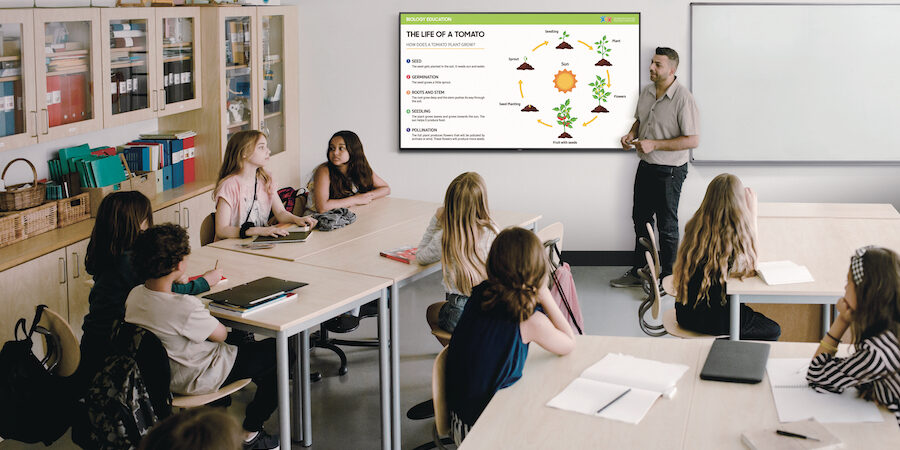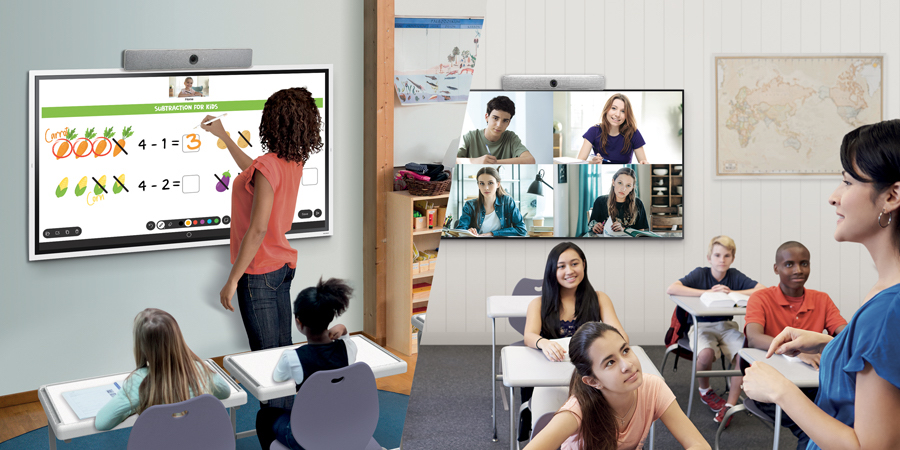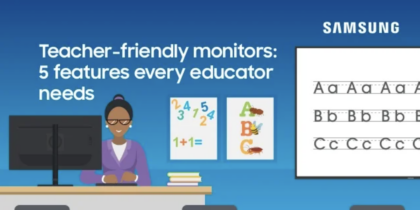Digital technology has dramatically increased access to teaching and learning resources, according to the Global Education Monitoring Report by UNESCO. The report found that digital technology reduces the time teachers and students spend on menial tasks, opening more time for other, more educationally meaningful activities.
Unfortunately, not every student and teacher enjoy equal access to technology — a point UNESCO brings up. For one thing, finding funds for new classroom technology poses a challenge for school districts as classroom technology grants can be difficult to come by. Some relief came in 2020 with the CARES Act, which provided an initial $13 billion allotment to K-12 schools. Another federal funding package, the Coronavirus Response and Relief Supplemental Appropriations Act (CRRSAA), dedicated an additional $54.3 billion to public schools, with a wide range of permissible uses.
Then came the $1.9 trillion American Rescue Plan Act, which set aside $122 billion — double the amount provided by the CARES Act and the CRRSAA — to local education agencies for the safe reopening of schools and reduction of impact from lost instructional time. Combining all three stimulus packages, as of February 2022, the total available funds for educational institutions amounts to about $190 billion.
If your district is in need of additional technologies for successful blended learning, or you’re seeking funding for assistive technology in the classroom, here’s a closer look at how to apply for and tap this funding. There’s still plenty of time to apply, too, as the third round of funding is available until September 2024.
ESSER funds and how to use them
The original CARES Act included an education stabilization fund called the Elementary and Secondary School Emergency Relief (ESSER) Fund. ESSER is a pass-through funding opportunity, meaning the money flows from federal agencies to each state. Local education agencies — typically school districts — can then send grant applications to their state to request funding for projects that fall under ESSER’s permitted uses. The program runs through September 30, 2024.
The first iteration of ESSER was flexible, but the 2021 package was even more so, including provisions for ed tech solutions, such as hardware and software to support hybrid, blended and flipped classrooms. A Samsung Interactive Display is a great example of this technology.
ESSER funds can also be used to address learning loss — especially for students considered at-risk — as well as supporting students’ social and emotional health and improving schools’ indoor air quality.
You should be prepared to apply for funding, especially grants for interactive whiteboards, as soon as possible. It’s wise to stay up-to-date on your state’s progress in processing and distributing funds. You can use this tracker to see how much funding your state received, or you can contact your district to ask how much ESSER funding the district received and how much is set aside for each school.
Blended learning without limits
The description of the related promo will be visible here. Download Now
Grant writing checklist
As you consider how to communicate your digital needs to your state’s board of education, take these four essential steps to improve the chances of success:
1. Follow the prescribed format
Ask colleagues — in your district and beyond — for examples of successful federal grants, especially those used to apply for funds from 2020’s original ESSER. Use these as a guide for yours. The format will likely include these basic components: A statement of need, your goals and objectives, the budget and timeline, and an explanation of how the funds will be used to address learning gaps. Some states are fielding these applications through an online platform, so be sure to check if yours is one.
It would also be a good idea to review the January 2023 letter to K-12 leaders by Roberto Rodriguez, the assistant secretary for planning, evaluation and policy development at the U.S. Department of Education. In it, Rodriguez detailed the many options for government grants and money targeted at eliminating the learning gap.
2. Explain how your project fits the criteria
While there’s a lot of flexibility in how these funds can be used, try to tie your project to several items on the list of ESSER Fund Allowable Uses.
Study the list of allowed uses for ESSER funding and clearly articulate how your project fits into one or more of the requirements. Overall, though, ESSER funds can be used to purchase educational technology (ed tech) — hardware, software and connectivity — that aids in the regular and substantive educational interaction between students and their classroom instructors. This includes students with disabilities, who may need assistive or adaptive technology.
Blended learning classroom technology may also relate to other priorities on the list, such as addressing the needs of lower-income students or planning for long-term school closures, including how to provide online learning.
3. Provide specifics on budget and timeline
State ESSER fund applications often ask for specific information about your proposed budget and timeline for using the funds. Make sure you know how much you plan to invest in such categories as equipment and hardware, software and licensing, and remote learning. Creating an itemized budget may require some research and preliminary conversations with ed tech and software companies.
You might take a tiered approach to budgeting for ed tech investments — focusing on total cost of ownership, student outcomes, budget management and value of investment. Balancing these priorities can help present a stronger case for the grant.
4. Plan your implementation
Before you purchase new technology for use in your classroom, create a detailed plan of action. As part of that process, ask yourself: How will the solution be installed and carried out? If, for example, you plan to add digital whiteboards, such as the Samsung Interactive Display, who will provide teacher training and technical support? What will be the benchmarks for measuring success?
Make sure you involve teachers and administrators in these discussions. Listen to their ideas and concerns and check in regularly as the new technology is deployed.
Learn more about how interactive teaching technology can inspire new classroom activities for teachers, as well as how well your classroom tech supports student outcomes.








